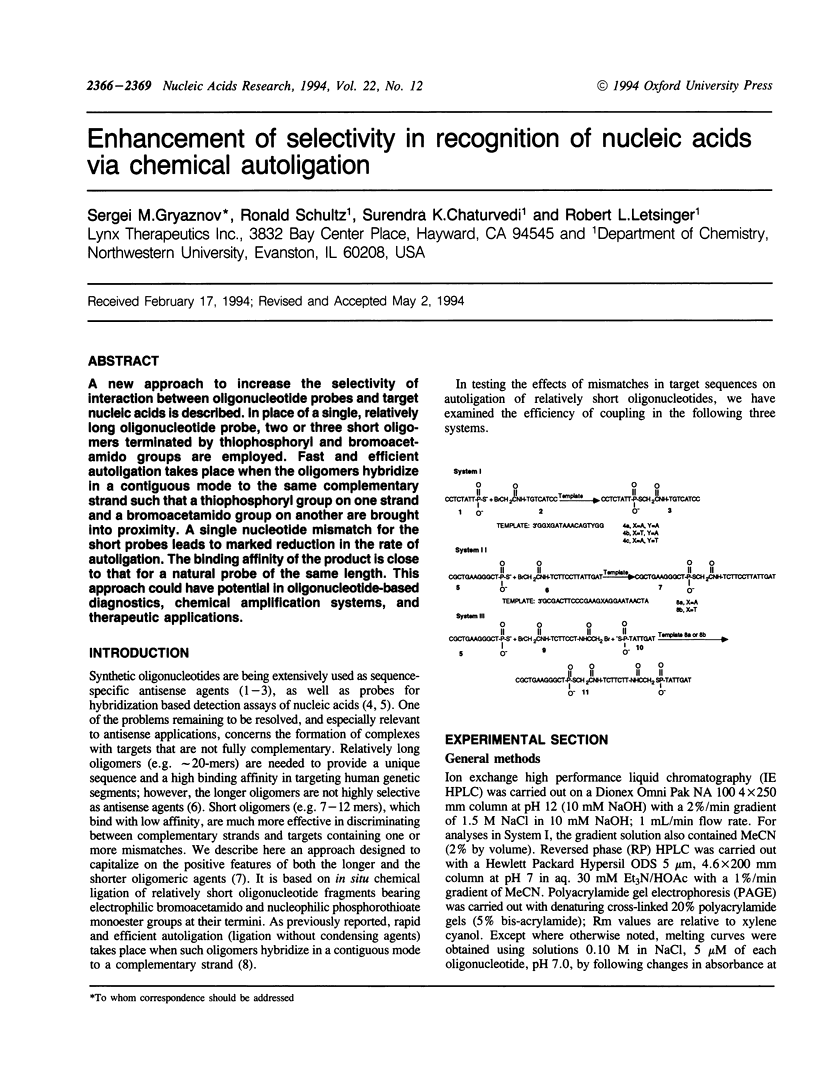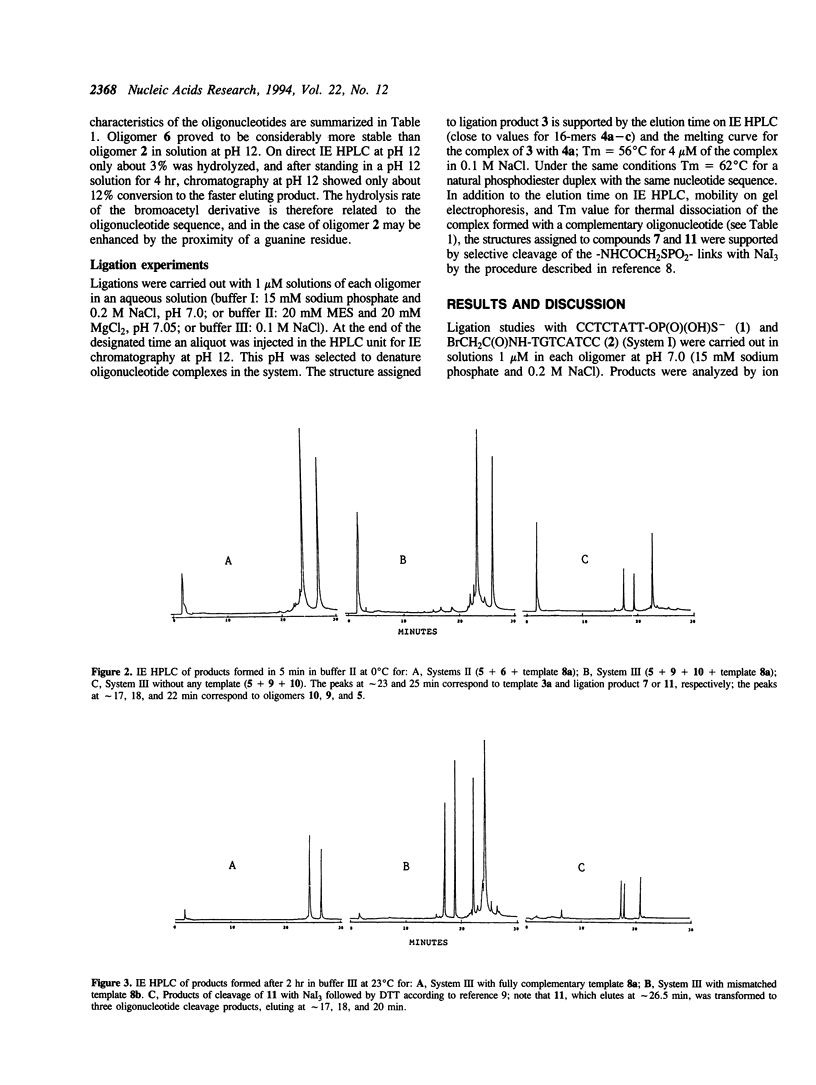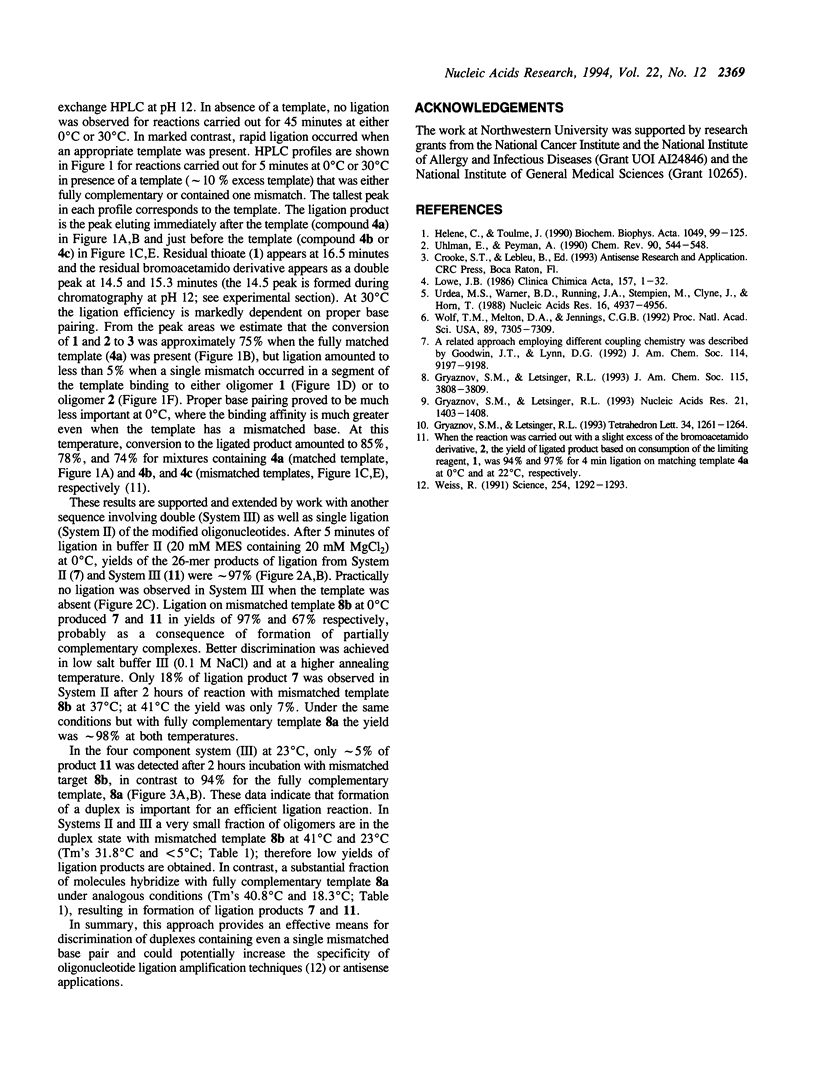Abstract
A new approach to increase the selectivity of interaction between oligonucleotide probes and target nucleic acids is described. In place of a single, relatively long oligonucleotide probe, two or three short oligomers terminated by thiophosphoryl and bromoacetamido groups are employed. Fast and efficient autoligation takes place when the oligomers hybridize in a contiguous mode to the same complementary strand such that a thiophosphoryl group on one strand and a bromoacetamido group on another are brought into proximity. A single nucleotide mismatch for the short probes leads to marked reduction in the rate of autoligation. The binding affinity of the product is close to that for a natural probe of the same length. This approach could have potential in oligonucleotide-based diagnostics, chemical amplification systems, and therapeutic applications.
Full text
PDF



Selected References
These references are in PubMed. This may not be the complete list of references from this article.
- Gryaznov S. M., Letsinger R. L. Template controlled coupling and recombination of oligonucleotide blocks containing thiophosphoryl groups. Nucleic Acids Res. 1993 Mar 25;21(6):1403–1408. doi: 10.1093/nar/21.6.1403. [DOI] [PMC free article] [PubMed] [Google Scholar]
- Hélène C., Toulmé J. J. Specific regulation of gene expression by antisense, sense and antigene nucleic acids. Biochim Biophys Acta. 1990 Jun 21;1049(2):99–125. doi: 10.1016/0167-4781(90)90031-v. [DOI] [PubMed] [Google Scholar]
- Lowe J. B. Clinical applications of gene probes in human genetic disease, malignancy, and infectious disease. Clin Chim Acta. 1986 May 30;157(1):1–32. doi: 10.1016/0009-8981(86)90314-1. [DOI] [PubMed] [Google Scholar]
- Urdea M. S., Warner B. D., Running J. A., Stempien M., Clyne J., Horn T. A comparison of non-radioisotopic hybridization assay methods using fluorescent, chemiluminescent and enzyme labeled synthetic oligodeoxyribonucleotide probes. Nucleic Acids Res. 1988 Jun 10;16(11):4937–4956. doi: 10.1093/nar/16.11.4937. [DOI] [PMC free article] [PubMed] [Google Scholar]
- Weiss R. Hot prospect for new gene amplifier. Science. 1991 Nov 29;254(5036):1292–1293. doi: 10.1126/science.1962188. [DOI] [PubMed] [Google Scholar]
- Woolf T. M., Melton D. A., Jennings C. G. Specificity of antisense oligonucleotides in vivo. Proc Natl Acad Sci U S A. 1992 Aug 15;89(16):7305–7309. doi: 10.1073/pnas.89.16.7305. [DOI] [PMC free article] [PubMed] [Google Scholar]


